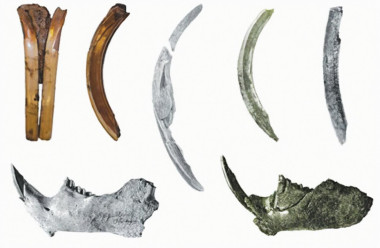Study shows beavers had a big influence on how people in the Stone Age lived
Beavers may seem like a recent arrival to the Netherlands, with their growing presence in recent years. The species became extinct there in the 19th century and was reintroduced in 1988. But before that beavers were widespread for thousands of years. “It really is a native species,” says Brusgaard. “In our research we wanted to look at how people dealt with the beaver’s presence in the past. There was no good picture of that until now.”
Together with fellow archaeologist Shumon Hussain (Aarhus University), Brusgaard analyzed previous excavations in the Netherlands, southern Scandinavia, the Baltic region and Russia. These showed that beavers were a much larger part of the human diet and landscape of northern Europe than had previously been thought.
Hunter-gatherers hunted beavers in the Middle and Late Stone Age for their meat, fur and castoreum, and used their bones and teeth to make tools. Beavers were one of the most common mammals at some archaeological sites in the Netherlands according to research recently published in The Holocene.

Add comment